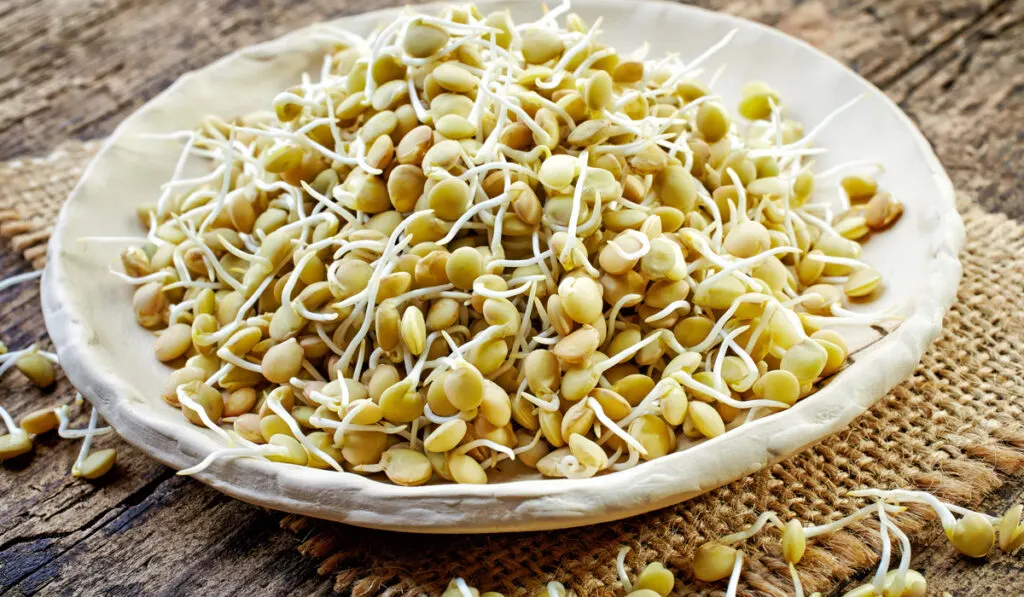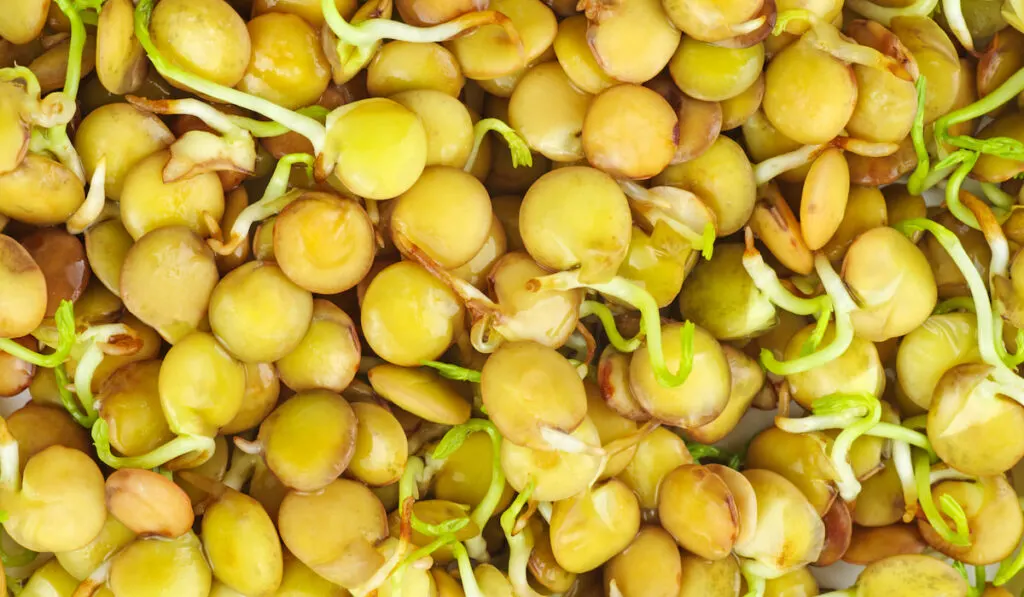Lentils have been grown for more than 10,000 years and were first domesticated in the ancient Middle East. Over time, this power food has traveled across the world’s great continents and seas, gaining fame for its nutritious value and endless pairings.
Dried lentils were the first to spread across the globe, though now it is lentil sprouts that are rising in popularity. Below, we’ll discuss three of the most popular lentil sprouts along with their benefits and share where you can find them.
Table of Contents
What are lentil sprouts?
Traditional lentils are those in seed form that grows on lentil plants. These are in hard pods that, when ready for harvest, crack open and reveal the dried version of the seeds.
Lentil sprouts, on the other hand, grow from lentil shoots. These shoots come from the seeds, typically involving exposure to conditions that cause them to germinate.
Because the seeds start to germinate and produce a sprout, there is a ton of nutritional value released with it. This is not the only clear benefit, as lentil sprouts also come with a reduced amount of trypsin, which makes them easier to digest.
Other health benefits include:
- Increased protein
- Increased fiber
- Better mineral uptake
- Increased antioxidant properties
- Aids in control of cholesterol
Types of lentil sprouts
There are three types of lentils that sprout, each one with its unique flavors and colors. While you can add them to any dish, some display deeper, more complex tastes than others, though all of them come with the same great benefits.
Brown lentils
Brown lentils are one of the most popular lentils on the market. They have a very earthy flavor that makes them great with robust spices and slow-cooked stews.
Brown lentils are possibly the most diverse for flavor pairings. They go well with everything from sauces to salads and more.
Green lentils
Green lentils are another sprouting lentil that too comes with a wide range of health benefits. Green lentils have more of a peppery flavor, making them a great companion for crisp salads or cold summery veggie-packed mixes.
Red lentils
Red lentils have a unique flavor when they sprout, one that is nutty and sweet. Compared to brown and green lentils, red lentils take little time to sprout, making them the ideal lentil for a quick and nutritious meal.
Because of their unique flavor complex, red lentils are perfect when paired with very spicy dishes or when thickening sauces.

Where you can find the best lentil sprouts
Learning about the health benefits of lentil sprouts will surely make you want to know where you can find them. The good news is, they’re more available than you might think, some of them right in your neighborhood grocery store.
If you’re on the hunt for lentil sprouts, here is where you can find them.
Online
Online shopping has been getting better and better each year, especially when it comes to food products. With so many growers and access to quick, reliable shipping, you could get your hands on lentil sprouts of great quality for an affordable price.
When searching online, be sure to look for seeds marked “Ready to Sprout” and that the seller is reputable.
Grocery stores
Believe it or not, a lot of grocery stores will carry lentil seeds. The one thing you need to avoid when looking in grocery stores is split lentils, as those do not have the ability to germinate. All others on our list do, so be sure to look for those that we mentioned above.
Farmers’ markets
Even if you don’t have a farmer’s market in your area, you might be able to make a short drive to a nearby town that does. Farmer’s markets are filled with goodies, from fresh veggies and fruits to tasty, all-natural creations like jams and preserves.
Another benefit to visiting a farmer’s market is that, if there are lentils, you can almost guarantee that the growers know a thing or two about sprouting them and can tell you exactly which ones to buy for the best sprout.

How to sprout lentils
There are so many ways to sprout lentils. Over time, you can develop your own method and find what works best for you but, for now, try this simple one out to sprout your lentils.
Note: Prepare one day ahead so you can soak your lentils overnight.
What you’ll need:
- A wide-mouth mason jar
- A wire sprouting lid
- Small bowl
- Sieve
- Your lentils (sprout-ready)
- Fresh tap water
What to do:
Step 1. Measure out about two tablespoons of lentils and add them to your bowl. Cover them with water and let them sit for at least 12 hours.
Step 2. Using the sieve, strain the soaked seeds and then, add them to the mason jar.
Step 3. Cover the mason jar with the wire sprouting lid.
Step 4. Tip the mason jar upside down so that it can drain and reduce any excess moisture.
Step 5. After 12 hours, drain the water and thoroughly rinse the lentils.
Step 6. Be patient as they begin to sprout! You’ll notice sprouting anywhere from 4 to 6 days.

Storing your sprouted lentils
When you have freshly sprouted lentils and you’re looking for a way to store them, you can do so either in the fridge or the freezer.
The fridge
To store in the fridge, make sure to rinse the lentil sprouts and set them out on a paper towel to dry thoroughly. Then, add them to a plastic bag and seal. Store them for up to two weeks.
The freezer
To freeze, you’ll first need to steam your lentil sprouts for at least 3 minutes.
Once they’re steamed, wrap them in paper towels to dry up and freeze them for one hour before storing them in a freezer-safe plastic bag.
Enjoy lentil sprouts, today!
Now that you know where to buy them, how to sprout them, and how to store them, it’s time to find your lentil sprouts!
